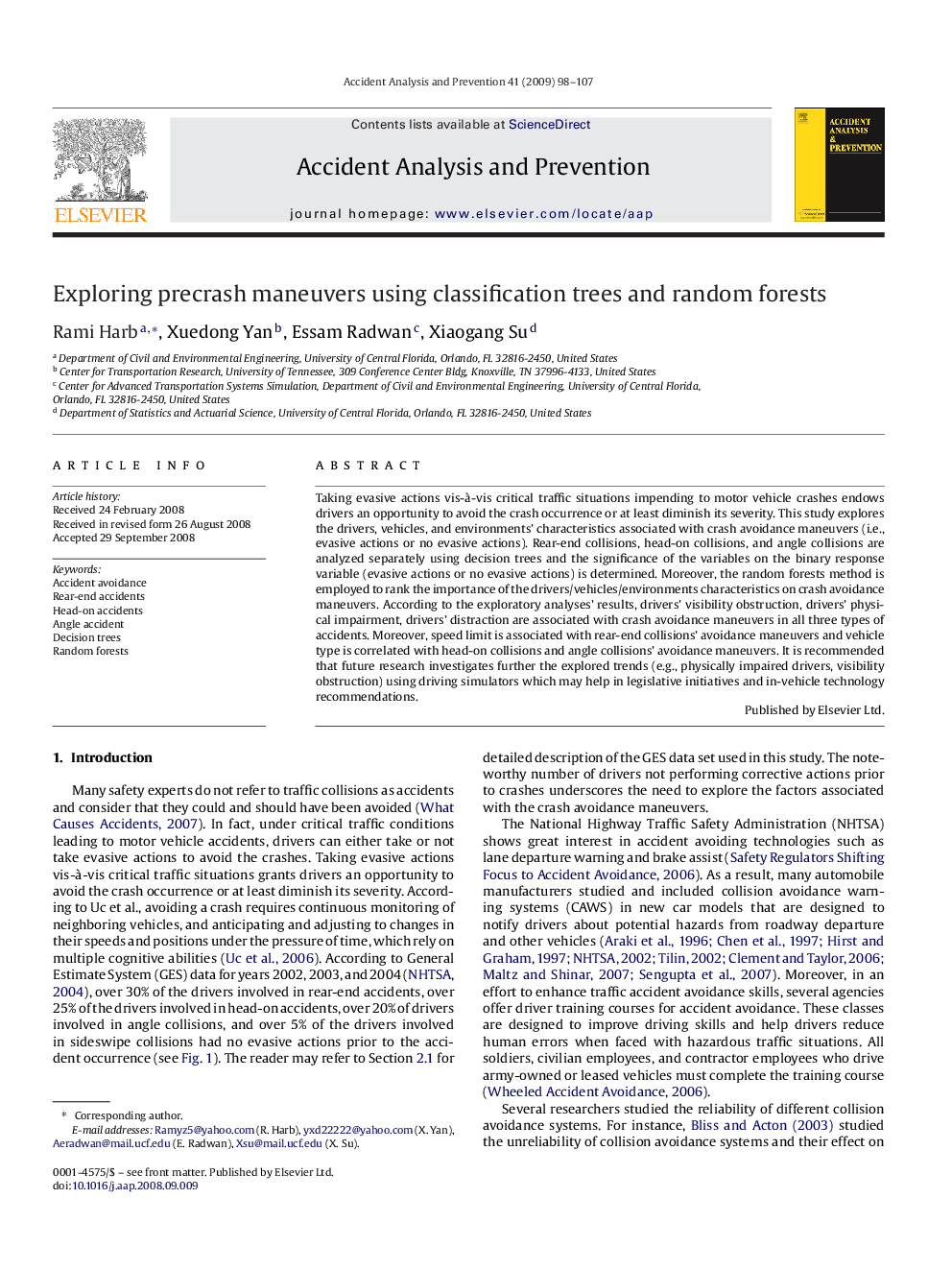| Article ID | Journal | Published Year | Pages | File Type |
|---|---|---|---|---|
| 573546 | Accident Analysis & Prevention | 2009 | 10 Pages |
Taking evasive actions vis-à-vis critical traffic situations impending to motor vehicle crashes endows drivers an opportunity to avoid the crash occurrence or at least diminish its severity. This study explores the drivers, vehicles, and environments’ characteristics associated with crash avoidance maneuvers (i.e., evasive actions or no evasive actions). Rear-end collisions, head-on collisions, and angle collisions are analyzed separately using decision trees and the significance of the variables on the binary response variable (evasive actions or no evasive actions) is determined. Moreover, the random forests method is employed to rank the importance of the drivers/vehicles/environments characteristics on crash avoidance maneuvers. According to the exploratory analyses’ results, drivers’ visibility obstruction, drivers’ physical impairment, drivers’ distraction are associated with crash avoidance maneuvers in all three types of accidents. Moreover, speed limit is associated with rear-end collisions’ avoidance maneuvers and vehicle type is correlated with head-on collisions and angle collisions’ avoidance maneuvers. It is recommended that future research investigates further the explored trends (e.g., physically impaired drivers, visibility obstruction) using driving simulators which may help in legislative initiatives and in-vehicle technology recommendations.
